Serving 652 students in grades Kindergarten-6, Overlake School ranks in the bottom 50% of all schools in Utah for overall test scores (math proficiency is bottom 50%, and reading proficiency is bottom 50%).
The percentage of students achieving proficiency in math is 38% (which is lower than the Utah state average of 39%). The percentage of students achieving proficiency in reading/language arts is 31% (which is lower than the Utah state average of 43%).
The student:teacher ratio of 20:1 is lower than the Utah state level of 21:1.
Minority enrollment is 33% of the student body (majority Hispanic), which is higher than the Utah state average of 29% (majority Hispanic).
Quick Stats (2025)
- Grades: Kindergarten-6
- Enrollment: 652 students
- Student:Teacher Ratio: 20:1
- Minority Enrollment: 33%
- Overall Testing Rank: Bottom 50% in UT
- Math Proficiency: 38% (Btm 50%)
- Reading Proficiency: 31% (Btm 50%)
- Science Proficiency: 34% (Btm 50%)
- Source: National Center for Education Statistics (NCES), UT Dept. of Education
School Overview
Overlake School's student population of 652 students has grown by 14% over five school years.
The teacher population of 33 teachers has grown by 32% over five school years.
Grades Offered
Grades Kindergarten-6
Total Students
652 students
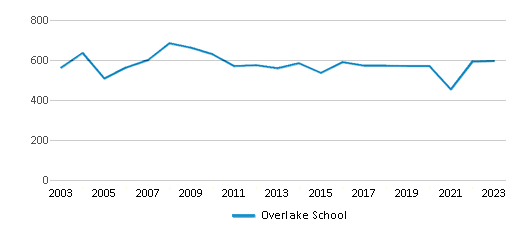
Gender %
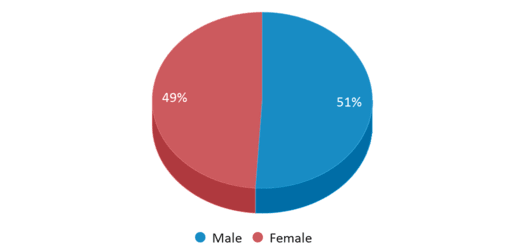
Total Classroom Teachers
33 teachers
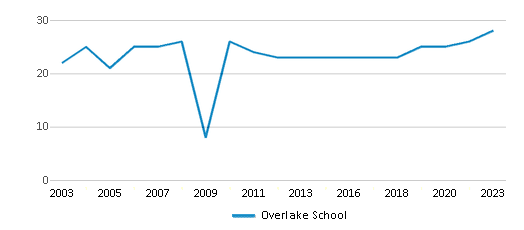
Students by Grade
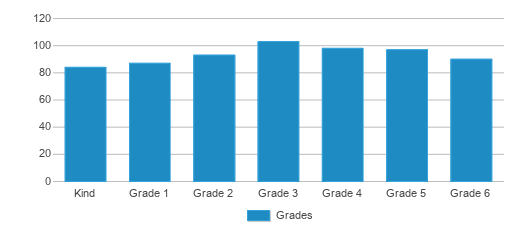
School Rankings
Overlake School ranks within the bottom 50% of all 975 schools in Utah (based off of combined math and reading proficiency testing data).
The diversity score of Overlake School is 0.51, which is more than the diversity score at state average of 0.46. The school's diversity has stayed relatively flat over five school years.
Overall Testing Rank
#670 out of 975 schools
(Bottom 50%)
(Bottom 50%)
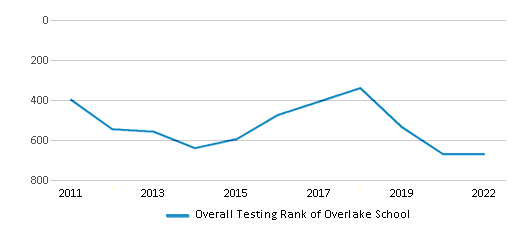
Math Test Scores (% Proficient)
(20-21)38%
39%
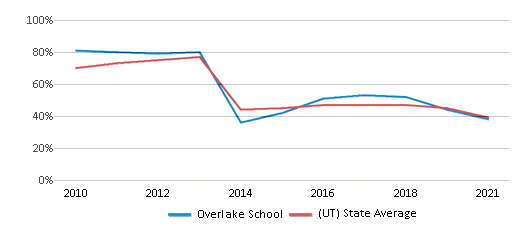
Reading/Language Arts Test Scores (% Proficient)
(20-21)31%
43%
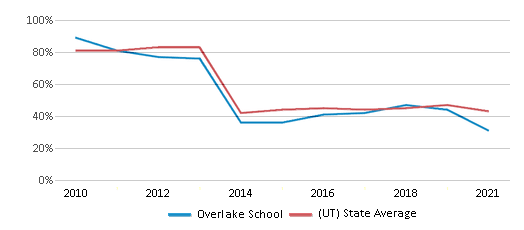
Science Test Scores (% Proficient)
(20-21)34%
45%
Student : Teacher Ratio
20:1
21:1
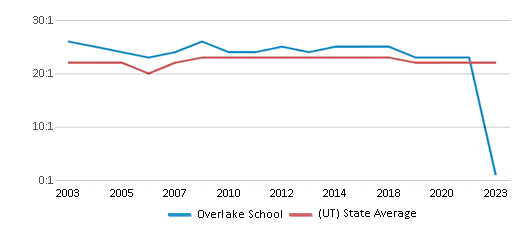
American Indian
n/a
1%

Asian
1%
2%
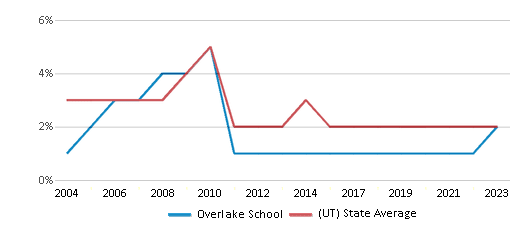
Hispanic
21%
20%

Black
1%
1%
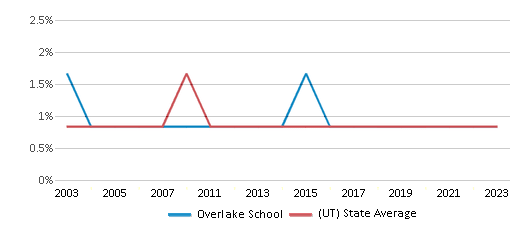
White
67%
71%
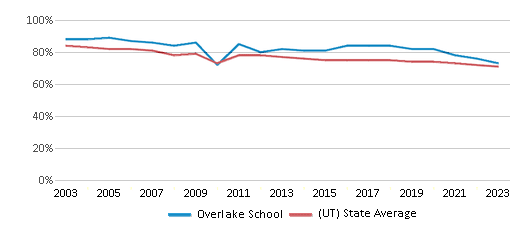
Hawaiian
7%
1%
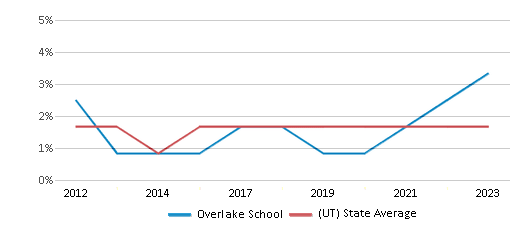
Two or more races
3%
4%
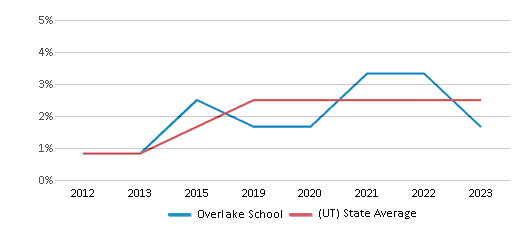
All Ethnic Groups
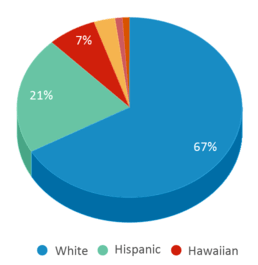
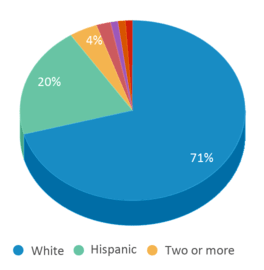
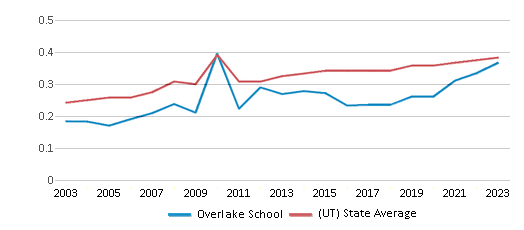
Eligible for Free Lunch
24%
24%
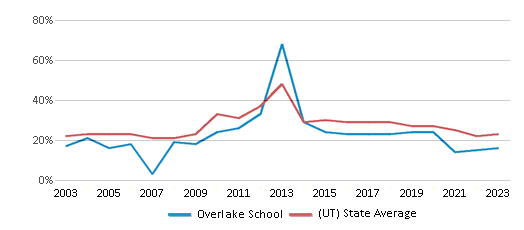
Eligible for Reduced Lunch
6%
6%

School Statewide Testing
School District Name
Source: National Center for Education Statistics (NCES), UT Dept. of Education
Profile last updated: 02/09/2025
Frequently Asked Questions
What is Overlake School's ranking?
Overlake School is ranked #670 out of 975 schools, which ranks it among the bottom 50% of public schools in Utah.
What schools are Overlake School often compared to?
Overlake Schoolis often viewed alongside schools like Excelsior Academy by visitors of our site.
What percent of students have achieved state testing proficiency in math and reading?
38% of students have achieved math proficiency (compared to the 39% UT state average), while 31% of students have achieved reading proficiency (compared to the 43% UT state average).
How many students attend Overlake School?
652 students attend Overlake School.
What is the racial composition of the student body?
67% of Overlake School students are White, 21% of students are Hispanic, 7% of students are Hawaiian, 3% of students are Two or more races, 1% of students are Asian, and 1% of students are Black.
What is the student:teacher ratio of Overlake School?
Overlake School has a student ration of 20:1, which is lower than the Utah state average of 21:1.
What grades does Overlake School offer ?
Overlake School offers enrollment in grades Kindergarten-6
What school district is Overlake School part of?
Overlake School is part of Tooele School District.
School Reviews
5 5/7/2020
I can't say enough great things about this school, every single teacher I have interacted with has been so sweet and kind. I volunteer weekly and get to interact and see how they are with their classroom and every single time I'm amazed on how they control the room and how the kids love and respect them. You can really tell the teachers care about their jobs and the kids in the school. The Russian program is mind blowing, If I could give them 100 stars I would, I can't even comprehend having to teach 25 kids in a day, let alone having to teach 50 kids total from rotating classes. I highly recommend this school. They TRULY care about your children!
5 8/11/2009
Attending Overlake has been a good experience for my children. Teachers have challenged them, given opportunities for growth, and have promptly attended to any concerns that have arisen. I have appreciated their flexibility and genuine concern for students.
2 6/23/2009
This school was terrible. They took what my son had accomplished in the previous year (special needs) and essentially took him back to the beginning. He is much worse off from having gone there, I should have kept him in his original school. I would not reccomend this school to anyone with special needs kids.
Review Overlake School. Reviews should be a few sentences in length. Please include any comments on:
- Quality of academic programs, teachers, and facilities
- Availability of music, art, sports and other extracurricular activities
Recent Articles

What Is A Charter School?
Explore the world of charter schools in this comprehensive guide. Learn about their history, how they operate, and the pros and cons of this educational innovation. Discover key facts about charter schools, including admission policies, demographics, and funding, as well as what to look for when considering a charter school for your child.

10 Reasons Why High School Sports Benefit Students
Discover the 10 compelling reasons why high school sports are beneficial for students. This comprehensive article explores how athletics enhance academic performance, foster personal growth, and develop crucial life skills. From improved fitness and time management to leadership development and community representation, learn why participating in high school sports can be a game-changer for students' overall success and well-being.

February 05, 2025
Understanding the U.S. Department of Education: Structure, Impact, and EvolutionWe explore how the Department of Education shapes American education, from its cabinet-level leadership to its impact on millions of students, written for general audiences seeking clarity on this vital institution.









